2014-10-14 By Robbin Laird
It is clear that Germany is under stress from the Euro crisis, the Ukrainian crisis and the crisis in the Middle East.
It is also clear that Germany needs to rebuild its defense capabilities in the face of global developments and the return of both direct defense challenges associated with Russia and the coalition engagements necessary to protect German and Western interests in the Middle East.
Recent press reports have underscored that the atrophy of German defense capabilities has been significant.
In part it is a question of providing for the parts for the existing defense equipment and ensuring that the well-deserved German reputation for maintenance of their military equipment does not become an historical memory.
Atrophying the supply chain is not a good way to have effective defense or defense industry for that matter.
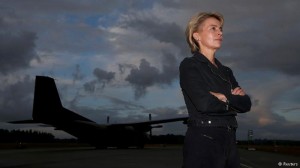
The question for Germany is not simply about its role in the Western Alliance but the overall capability, which the Alliance itself can deliver against multiple challenges at the same time.
It is no longer an abstract question of the % contribution of Germany to Alliance defense; it is increasingly about the viability of the Alliance’s ability to operate in direct defense of Europe as well as in operating to meet the “strategic surprises” which Lt. General Preziosa, the Chief of Staff of the Italian Air Force in a forthcoming interview refers to as the challenge facing Europe in the period ahead.
“Pop up” crises requires an ability to respond rapidly and to shape collaborative insertion forces able to move rapidly against a threat.
Put bluntly, this is really about air and naval power and the ability of a coalition to put together rapidly an effective C2 capability.
How capable is Germany of providing such forces?
Certainly not capable enough, and the question is not only the readiness of forces due to absence of parts, supplies and maintainability of equipment, but the existence of enough core capability to shape, participate and contribute to crisis management.
What this means is not simply an inability to contribute, but a failure to execute national missions determined important by the German government.
The recent German decision to support the Kurds against the ISIL assault is rooted in both values held deeply by Germans of revulsion against the actions of ISIL but a strategic interest as well concerning the impact of the ISIL expansion on Turkey and the GCC states, as well as Israel, all allies of Germany.
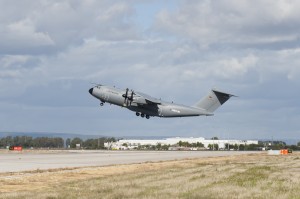
Chancellor Merkel took a timely and courageous decision that Germany should act to assist the Kurds.
The only problem is that arms delivery requires just that — DELIVERY — as well as training and the need to shape as much as possible a custodial role with regard to those arms delivered and the training provided to the Kurdish forces.
It is clear that a key element for executing such a mission is air lift, air refueling and escort aircraft to protect those planes lifting and refueling.
Here the reality of the inventory catches up with 21st century objectives: the airlift fleet is too old to play the role, which it needs to play in 21st century operations.
There have several recent incidents which highlighted the clear gap in airlift which affects overall operational capabilities.
According to a piece by Anton Troianovski published in The Wall Street Journal on September 29, 2014:
A German military transport plane delivering medical aid to Ebola-stricken regions spent the weekend grounded by technical problems in the Canary Islands, further highlighting the country’s poor state of military readiness.
Coming less than a week after a leaked government report to lawmakers showed that some of the German military’s oldest hardware is falling into disrepair, the incident is piling pressure on Chancellor Angela Merkel‘s government to fix the country’s defenses.
One of two aging Transall C-160 transport planes scheduled to arrive in Dakar, Senegal, on Saturday couldn’t take off from an airport on the Atlantic island of Gran Canaria because of a mechanical defect, a spokesman for the German Air Force said.
A substitute airplane en route from Germany Monday afternoon was expected to drop off spare parts for the stricken plane and bring its medical payload to Dakar in the evening, two days behind schedule.
The problem came days after equipment problems delayed German weapons and trainers being sent to Kurds fighting Islamist militants in Ira
Another example was a recent case of an inability to simply transport German troops home from Afghanistan.
A military blog Augen geradeaus! posted that 150 Bundeswehr soldiers currently waiting (since last Saturday) to fly home from Masar-i-Sharif in Afghanistan simply had to sit and wait, because there weren’t any Airbus A310 transport planes fit to take them home.
The blogger, Thomas Wiegold, wrote that Berlin was considering using the personal airplane of Chancellor Angela Merkel to get the soldiers home. The defense ministry has confirmed that report, stating, however, that there wouldn’t be enough room on Merkel’s “Air Force One” for all of the soldiers. Other options are currently being considered, Wiegold quoted the ministry as saying.
Fortunately, a solid step forward in dealing with the airlift gap problem is the coming of the A400M.
The program is now delivering planes and Germany has an opportunity not only to sort through its airlift problem but to shape a re-set of the overall air combat capability challenge as well, by properly supplying their Eurofighters and by augmenting their tanker fleet as well.
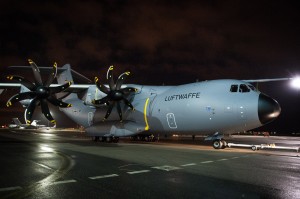
Australia has recently self deployed from Australia to the Middle East, with its new lifters, and tankers to be able to engage in what the Australian Government believes is a mission of national import – the defeat of the ISIL.
ISIL has posed both an internal and external challenge to Australia, and Chancellor Merkel of Germany has highlighted the role of German citizens in fighting for the ISIL as well.
It can be done, and it is difficult to see why Australia can do what Germany can not.
Military air lifters have become a core combat capability, and not just military equivalents of civilian transport.
In a 2013 piece on the role of military airlift, a number of the key changes which airlifters are both contributing to and enabling for combat operations were underscored:
At the recent Trade Media Briefing 2013, journalists who attended were given the opportunity to fly the aircraft for more than an hour. Francis Tusa, the well-known British journalist and hardly a Euro hugger, underscored what we all felt:
The lack of noise within the aircraft was noticeable compared to the C-17, C-130 or other aircraft. The seats are more comfortable as well. I did not hear the engines start up, and so was surprised when the aircraft took off. And then the incredibly rapid takeoff demonstrated its capability to lift from very, very short fields. The plane had a very stable performance in flight. And all of this in a very large cargo aircraft.
The A400M features C-130-like ability to use a wide variety of airfields with the capability to carry oversized loads of the sort that the C-17 currently carries.
The aircraft will be able to deliver equipment and personnel closer to the point of attack than the C-17 with C-17 type loads.
It will not be difficult to see how this aircraft will initially be used.
In the current Mali operation, the French had significant challenges in delivering the capability necessary for their forces. When the A400M many years ago was first thought of, lift was considered somewhat equivalent to a truck or a greyhound bus.
With the last decade of experience and the revolution in air dropping, the air lifter is an integral part of the kind of expeditionary logistics, which insertion forces clearly need to operate with for 21st century operations.
In my colleague’s reporting from Mali, the French military made it clear to her that they were eagerly waiting for the A400M to join the fleet in order to facilitate the kind of operation which Mali represented.
As Murielle Delaporte underscored about the Mali operation:
Air support has been crucial in the areas of more intense engagement. Forward air controllers or FACs were important members of the ground forces. And air assets –Air Force (fighters), Army (helos) and Navy (Atlantique 2) – have been drawn upon in the operation. More generally, and as far as the air component goes, one should also stress that the demands on the old tactical transport aircraft Transalls or the C-160s are very high. This would be a good time to have the new A400Ms in play. French Air Force officers all agree that it will be beneficial in the near future to have a plane which could fly straight from France and have the capability to land on the short, tough airfields characteristic of the Mali operation.
The logistics side of the Mali operation was inextricably intertwined with the combat forces in the combat operation.
Murielle Delaporte, based on interviews with the French forces in Mali, has emphasized that the French are re-inventing the Caravan concept but in the context of 21st century operations. They are deploying into combat areas the forces they need but correlated with the support they need as well.
They are not creating mobile Walmarts that need to be defended. And in this effort, various transport means are being used, including convoys (on which she travelled for several days in Mali) as well as airlift of various types.
In other words, the Germans are about to receive the right kind of airlift for 21st century operations, rather than just repairing a gap.
The A400M can help shape a strategic rethink of the kind of military operations, which Germany needs to contribute to ensure European security and defense for 21st century threats.
Not surprisingly, critics have emerged which harp on what are argued are shortcomings of the initial A400Ms in the hands of the French.
But there seems to be a point missed by German critics: compared to what?
Non-existent airlifters versus a new airlifter begin its life quite successfully in France.
We will soon publish the findings of our colleague Murielle Delaporte from her visit in June 2014 to the first operational squadron of A400Ms based in Orléans.
The planes at Orléans are clearly just the beginning of the long life of the operational A400M fleet and the French Air Force is a foundational operator of the A400M.
As such, the FAF is in a position to suggest changes to the coming A400Ms based on their initial experiences with the plane and their support of the aircraft.
The good news for Germany is that the A400M is not just a plane but a long-term enterprise.
Unlike the Transall experience, France and Germany will not start with a common plane and end up with two very different planes.
The commonality inherent within the aircraft can allow the users to end up with the capability to support one another in common operations.
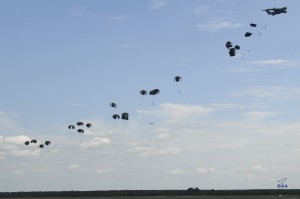
If done properly, there is no reason that German maintainers could not support other A400M aircraft operating in an area of interest where Germans are deployed.
There is common training as well which has proven its validity already in how the French drew upon the training in Seville and applied it to the standup of the squadron at Orléans. The experience of the various users of the plane will be shared in the common training body of knowledge and the stand up of a core user group.
Common parts can be pooled as well as the plane is shaped around common unique identification numbers (UIDS) stamped on the parts. Common inventory control across national inventories is enabled by such an approach. It is up to the nations to leverage this capability and to share parts.
Already a number of agreements are in place to shape common practices and approaches, which can both, enhance cost and combat effectiveness.
An airlifter is bought to deploy; and any approaches, which allow for that aircraft at the point of engagement to be sustained more effectively is a crucial point in its favor, and certainly this can be true for the A400M, understood as an enterprise and not as single point of entry aircraft.
For example, the European Air Transport Command provided a news update on October 7, 2013 highlighting a French-German agreement on common training.
On 30 September 2013 French Air Chief General Denis Mercier and his German counterpart General Karl Müllner signed a Technical Agreement (TA) about the future A400M training. The agreement was signed at the French Air Base Orléans-Bricy – quite after the official welcome of the first A400M aircraft at its first operational home, the French MEST (Multinational Entry into Service Team).
The TA enables the training of pilots, loadmasters and technicians in mixed classes. One example: While the basic flight training on the A400M will take place at the German Air Transport Wing 62 in Hannover-Wunstorf, the tactical training follows at Orléans-Bricy, where the French training facilities are located.
While the basis for the training on this brand new aircraft is now settled, EATC’s Functional Division can start developing contents for the training itself. Therefore “the signatures below this treaty may challenge the EATC” states Major General Pascal Valentin, Commander of the EATC, “but surely also underline the EATC‘s key role in the employment of this new aircraft. We are looking forward to service the best to benefit the EATC Participating Nations (PN).”
As future operator of the Airbus A400M the EATC will run – via its hubs at the national wings – up to at least 100 A400M of all EATC PN.
Another example is a joint UK-French agreement on support for the A400M.
In an article by Andrew Chuter published in Defense News on July 5, 2014:
A British MoD spokeswoman said the slot swap was part of an Anglo-French drive to cooperate on the program.
“Collaborative opportunities between Great Britain and France aimed at delivering further financial savings, program efficiencies and/or operational effectiveness benefits, are already being exploited,” she said.
A French Air Force spokesman said the two nations are close to extending cooperation efforts on spares and for a single support contract management arrangement.
“Cooperation with the UK on spare parts and maintenance is a strong common objective within both MoDs,” said the spokesman.
“A lot of work has been done so far and much progress has allowed us to reach a common concept. Negotiations with Airbus Defence and Space are now converging and a common contract has been prepared in order to have the support services ready in September for when the UK receives their first aircraft. This relatively short duration contract, around two years, will allow both nations to measure the benefit of pooling spares and managing only one contract,” said the spokesman.
France, which already operates the aircraft, has a full in-service support arrangement with Airbus. Britain has a similar agreement in place as the first RAF delivery flight nears.
The September delivery was made possible after Britain and France agreed late last year to swap production slots on two aircraft. That swap will see the British receive aircraft slots previously earmarked by the French for September this year and April 2015, while France takes over British slots in 2018 and 2021.
In short, for Germany the A400M is not just a crucial gap filler, but a step forward in crafting the kind of 21st century military capabilities Germany needs to execute its national defense missions and to contribute to core coalitions crucial to Germany as well.
And it should be noted that the first German A400M also flew today as well.
According to an Airbus Military press release dated October 14, 2014:
The first Airbus A400M new generation airlifter ordered by the German Air Force has made its maiden flight, marking a key milestone towards its delivery. The aircraft, known as MSN18, took off from Seville, Spain today at 14:30 local time (GMT+1) and landed back on site 4 hours and 58 minutes later.
Experimental Test Pilot Thomas Wilhelm, who captained the flight, said after landing: “It is a great privilege to have conducted the first flight of the German Air Force’s first A400M. I am absolutely confident that the combination of strategic range with true tactical capability that it brings will contribute enormously to the service’s air mobility capability for military and humanitarian missions.”
The aircraft is the first of 53 ordered by the German Air Force and will be known in-service as the A400M Atlas.
Initial A400M Operations:
First A400M Operational Mission Flown Into Africa:
An A400M operated by the French Air Force (Armee De L’Air) has become the first of type to perform an operational flight delivering 22 tons of supplies in support of France’s Operation Serval in Mali.
The new generation airlifter, the second to be taken into service by the French Air force, flew out of Orleans air base in December 29 on a close to seven hour mission that also involved taking French Defence Minister Jean-Yves Le Drian to Mali as well as Chad and Niger Flight International reports.
The mission was flown by the second A400M to be delivered to the European nation’s air force and was “carefully planned in order to overcome all eventualities” according to mission commander, identified only as Lieutenant Colonel Creuset.
This included using a newly installed full mission simulator at the Orleans air force base.
EATC on an International A400M Mission
Although the German Air Force will receive the first own A400M “Atlas” planned in November 2014 – and Belgium in 2018 – both nations can already use the services of the new European transport aircraft: On 09 August 2014, the A400M flew for the first time German part load out of Cologne military airport towards Washington Dulles airport. MSN008 (military 0008/F-RBAB) returned today from the Canada with first Belgian and additional French part load on board – having since then crossed some international borders…
Crossing new borders
The original mission – led by two French crews on board – was to carry out French aircraft equipment out of Orléans, where all three EATC assigned (and French) A400M are actually stationed.
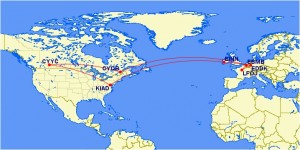
When also air transport requests from Belgium and Germany found their way to the EATC, it turned out, that all three nations could be serviced with one combined mission.
This mission was consequently designed in a way that the aircraft was first to land in Cologne-Wahn. The aircraft then turned over to Shannon (Ireland) for a fuel stop. Crossing the Atlantic the Atlas entered Washington Dulles Airport in the late evening, where the aircraft lifted its cargo bay – the German partload was addressed to the German detachment at Holloman Air Force Base (New Mexico).
The planned flight path sent the aircraft further to Calgary (Alberta, Western Canada), where it took up the Belgian as well as additional French partload. After a planned fuel stop at Quebeck City (Quebeck, Eastern Canada), the aircraft again headed over the Atlantic towards Brussels military airport at Melsbroek, where MSN008 arrived at 10.15 local. Finally reaching its home base, the “Atlas” had covered a total distance of more than 10.000 nautical miles, nearly 20.000 kilometers.
Always in the starting blocks
Watching this remarkable aircraft diving through the skies is also due to many EATC impulses within its Functional Division, where aircraft specialists of the EATC Participating Nations created successfully a number of concepts to accelerate the aircrafts introduction into the national Air Forces.
“We have made our homework yet”, remarks EATC Commander, Major General Christian Badia, as EATC provides guidance and know-how, e.g. by enhancing many interoperability measures around the new aircraft – thus decreasing later expensive harmonization procedures.
“When in a few months the first German A400M touches the ground of Air Transport Wing 62 in Hannover-Wunstorf, the German Air Force can rely on us when it comes to functional and operational issues on this very modern aircraft. By the way, this first complex A400M mission with international payload indicates, that EATC gathers all the momentum, taking action and care to make the A400M introduction a success – in functional as well as in operational matters. And it (EATC) has to, because in less than one decade we run a hundred of this remarkable aircraft.”
http://eatc-mil.com/45/articles/news/282/+First+international+A400M+mission+successfully+conducted
Initial Operation for 5th French A400M
The fifth Airbus A400M delivered to the French Air Force flew its first real operational sorties the first week of October in support of Operation Barkhane, the combined name of the previous French operations Serval (Mali) and Epervier (Chad) and extended to cover all the former French colonies in the region that also include Burkina Faso, Mauritania and Niger. Barkhane’s primary target is to fight armed terrorists and rebel groups in the Sahel / Sahara Region.
Having completed 50 hours of flight, the A400M Atlas left French Airbase BA123 Orléans on 1 October with 3 pilots, 3 crew and 2 mechanics on board for N’Djamena in Chad.
It made stop-overs in Istres, Niamey, Ouagadougou, Kinshasa and – on the return flight – in Brussels before returning home on 3 October. To Niamey it took 20 tons of cargo, to N’Djamena another 19 tons divided over 9 pallets.
Before the arrival of the A400M an Armée de l’Air’s C160 Transall would have done the job, but with a lesser load and a mission that would last 5 days in stead of three.
http://airheadsfly.com/2014/10/09/first-real-op-for-5th-french-a400m/
The quote and photo for the initial photo come from the following source:
http://www.dw.de/bundeswehr-struggles-with-faulty-defense-equipment/g-17968924

